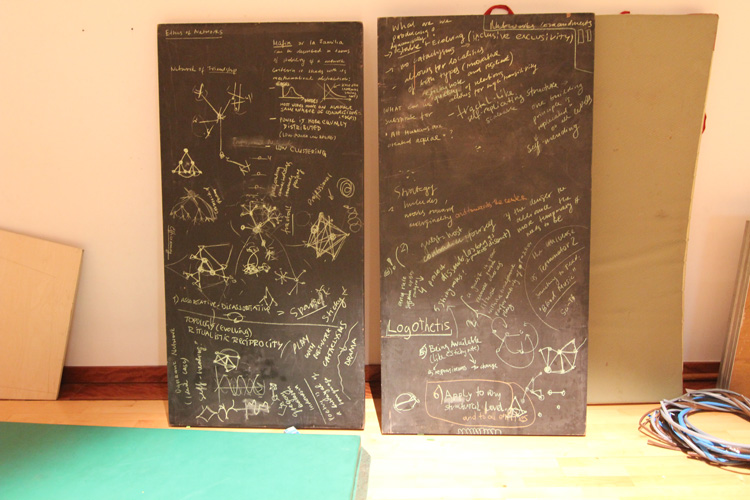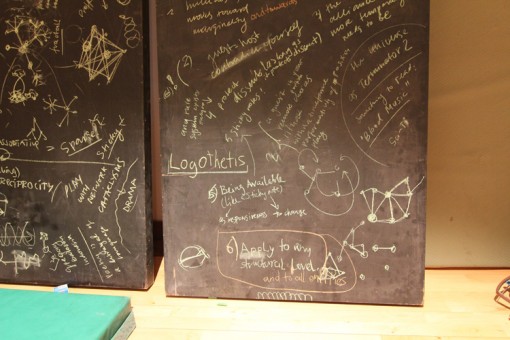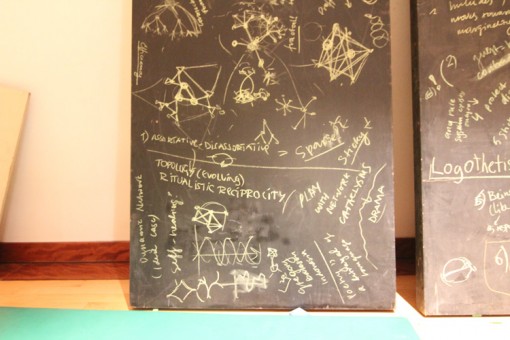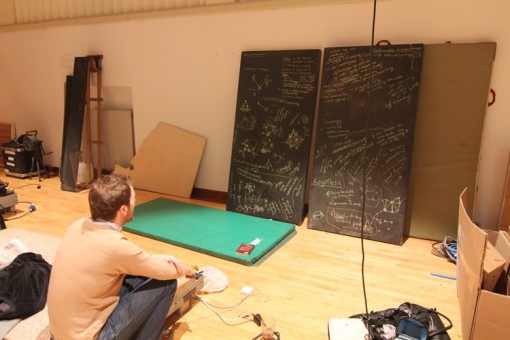Posted by Nodus Labs | July 15, 2011
The Ethics of Networks

Dmitry Paranyushkin of Nodus Labs was invited to take part in the “settlement” initiated by Vladimir Miller in early January 2011.
In Vladimir’s own words: “The settlement is a model to engender and structure work, knowledge, events and encounters. In a shared space, the participants function as an open group where questions of territory, negotiation and hospitality in art production surface. […] Between anarchy and the rule of majority the settlement praxis actively searches for a spatialized production of dis-agreement.”
Client: APASS: Advanced Performance and Scenography Studies
Objective: Find how the framework of network science can be used to produce behavioural changes in our everyday interactions.
Together with the other participants we worked for some days on what we called “the ethics of networks”: what behaviors various network constellations produce and how these behaviors in turn determine network structures. In other words, what are the ways for people to come together and how it’s related to their behavior inside the alliances they form.
Some research on this subject is available in Communities and Togetherness and Inclusive Exclusivity texts posted on this website. Our interest was to see what kind of network structure would be dynamically stable, be able to assume different properties (social scale-free vs random networks), how it could be sufficiently open to newcomers, and yet committed to the already existing structural motifs.
The properties of these networks would be:
1) Dynamically stable and evolving (inclusive exclusivity) – the network is open to the outsiders and the “foam”, but also retains its specificity;
2) Allows for localities of different types to emerge (both innovative interconnected ones and resilient clustered ones);
3) Sticky-note quality of relations (you attach firmly but you also can move on to another place/alliance/constellation);
4) Fractal-like self-replicating structure;
Strategies (for every particular node to assume to ensure that their networks will have these qualities above):
1) Includes and moves towards marginality and towards the center
2) Being a hospitable guest, contradicting yourself (the idea of play, ritual of reciprocity that avoids escalating symmetry or complimentarity), performativity of position)
3) The denser (more substantial) the alliance the more temporary it should be
4) Protect dissent (as long as it also protects dissent)
5) Being available (like a sticky note) – both as responsiveness and being able to change
6) Apply to any structural level and to all entities.




